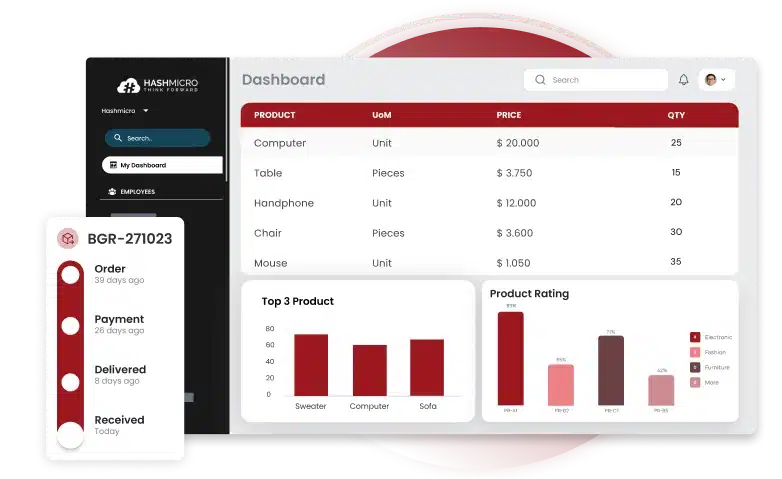Spend analysis is a process of collecting and analyzing expenditure data to reduce costs, improve efficiency, and ensure compliance. It helps businesses understand spending patterns, make informed procurement decisions, negotiate better contracts, and manage supplier relationships.
Yet, many companies are still stuck in the past, relying on manual spend analysis—an approach that’s not only slow but also prone to errors. In fact, a Deloitte study found that procurement professionals waste up to 40% of their time just collecting and analyzing data manually.
That’s why automating spend analysis is a game-changer. With automation, you can process vast amounts of data in a flash, gaining real-time insights that empower you to make faster, smarter decisions.
This article will cover the basics of spend analysis, the benefits of automation, and how it can transform procurement efficiency.
Key Takeaways
|
Table of Content:
Table of Content
What is Spend Analysis?
Spend analysis is a systematic process of organizing and reviewing procurement data, supplier relationships, and purchases. It involves grouping and reviewing all spending data, vendors, and purchases to spot ways to save money and improve operations.
The spend analysis process involves:
- Identifying and collecting all sources of spending data across different business units and the entire organization.
- Cleaning the data to remove errors and applying standard formatting.
- Centralizing the spending data in one location.
- Grouping the data by supplier parent company and standardized spending categories.
- Analyzing the data to uncover actionable insights can lead to potential savings and more efficient operations.
Meanwhile, spend analytics takes the concept of spend analysis to the next level using advanced data analytics techniques. It doesn’t just cover the basics; it goes further by incorporating tools like artificial intelligence (AI), machine learning, and predictive modeling.
These tools enable organizations to understand past spending patterns, predict future trends, evaluate supplier risks, and gain deeper insights. This deeper understanding helps drive more strategic procurement decisions.
Differences between Direct and Indirect Spend
Spending is generally categorized into two main types: direct and indirect.
Direct spend involves goods and services directly related to a company’s product production. This includes raw materials, manufacturing machinery, direct labor, production services, and shipping costs.
Conversely, indirect spend covers goods and services that support the company’s operations but aren’t directly involved in product creation. Examples include accounting and legal services, travel and lodging, facility maintenance and utilities, and human resources.
Companies often manage these two categories differently. The focus in indirect procurement is usually on cost savings, which can lead to higher profits.
In direct procurement, the decisions are more complex because direct spending influences both revenue and profitability. For instance, while higher-quality raw materials may be more expensive, they can also lead to better products that increase revenue and enhance customer loyalty.
Benefits of Spend Analysis
Regular spending analysis offers significant benefits, including cost savings, improved supplier relationships, more efficient procurement, and better expense forecasting. Companies can get these spend analysis benefits in the following:
- Cost Savings: Identifies areas for cost reduction, consolidates suppliers, renegotiates contracts, and reduces unnecessary spending. Spend analysis can help organizations achieve cost savings of up to 15%.
- Improved Supplier Relationships: Evaluates and rewards high-performing suppliers while eliminating poor ones, leading to better terms and stronger partnerships.
- Enhanced Visibility: Provides clear insight into company expenses, aiding decision-making and fostering initiatives to reduce costs and improve efficiency.
- Administrative Efficiency: Streamlines procurement processes by consolidating contracts and reducing administrative efforts for better discounts and productivity. Organizations using spend analytics can improve procurement efficiency by 10% to 15%.
- Accurate Forecasting: Supplies baseline data for more precise future spending forecasts and long-term planning.
- Reduced Maverick Spending: Identifies unapproved purchases to ensure compliance and reduce costs by keeping spending contract-based and vetted.
How to Conduct Spend Analysis
Spend analysis projects may vary, but they generally follow these six essential steps from identifying data sources to analyzing the results:
1. Identify Data Sources
First, determine which spending will be analyzed. This step allows you to focus on key spending sources. You can segment your spending into different groups and identify data sources across your departments, plants, and business units. Start by pinpointing areas of significant spending, such as procurement, finance, and marketing.
Common data sources:
- ERP tools
- General ledger information (financial data)
- Purchase orders
- Supplier-shared data
- Risk reviews
- Credit ratings
- Transaction data
- Other internal systems and external sources
2. Data Extraction
Once you’ve identified the data sources, capture the spend data and consolidate it into a single central database. Since data often comes in various formats, languages, and currencies, this step can be challenging.
3. Data Cleansing
Cleanse the data to eliminate inaccuracies, errors, and redundancies. This step involves correcting any discrepancies in descriptions and transactions to ensure accuracy. Data cleansing also includes removing typos, validating missing codes, and updating information for relevance.
4. Data Enrichment
Enrich the spend data by enhancing and refining it. This step includes standardizing the data for easy viewing and ensuring that all names and details at the header and line levels are accurate and consistent with a specific naming standard.
5. Classification
Group similar suppliers and unify the diverse spend data into clearly defined categories. This step simplifies spend management across the organization. Classification harmonizes all purchasing transactions under a single taxonomy for a clear view of global spending.
- Spend categories: Logical groupings of similar expenditure items or services.
- Spend taxonomy: A hierarchical classification system for spend categories, with levels ranging from three to six based on the organization’s needs.
When designing a taxonomy, ensure it is communicated and aligned internally with key stakeholders, such as Finance and Category Managers, to classify data accurately.
6. Analysis of Data
The final step is to identify opportunities for savings and procurement improvements. Analyze the data to address questions like, “What are the best contract deals per supplier?” or “Are buyers purchasing from preferred suppliers?” This step helps identify areas to reduce the number of suppliers per category and negotiate better rates.
Spend Analysis KPIs and Metrics
Procurement data can be analyzed in various ways using key performance indicators (KPIs) to measure and improve the effectiveness of procurement activities. These KPIs are vital for identifying areas where your procurement process can be optimized.
Here are some key spend analysis KPIs to keep an eye on:
- Spend Under Management: This KPI tracks the percentage of total spending that’s directly overseen by the procurement team. High levels indicate strong procurement practices and tighter control over expenses.
- Spend Visibility: This metric evaluates how clearly and comprehensively your organization can see its spending data. Greater visibility leads to better decision-making and more effective spend management.
- Cost Savings: This KPI measures the total amount saved through initiatives like supplier negotiations, strategic sourcing, and consolidating spend. It quantifies the financial impact of your cost-saving efforts.
- Savings as a Percentage of Spend: This indicator shows the savings achieved relative to the total spend. It’s a clear measure of how efficient and effective your procurement strategies are.
- Spend by Category: This KPI categorizes spending into different areas, like direct and indirect spend, which will provide insights into where the money is going and highlight areas that may need more attention.
- Supplier Consolidation: This metric tracks the number of active suppliers and how spend is concentrated among them. Effective consolidation can lead to better pricing, stronger relationships, and simpler procurement management.
- Supplier Performance: This KPI includes metrics like on-time delivery rates, order accuracy, and the quality of goods or services. Monitoring supplier performance ensures they meet your organization’s standards and contractual obligations.
- Payment Terms Compliance: This tracks whether your organization sticks to agreed payment terms with suppliers. Paying on time helps maintain strong supplier relationships and can also unlock early payment discounts, boosting overall savings.
- Contract Compliance Rate: This measures the percentage of spending that follows negotiated contracts versus off-contract or maverick spending. High compliance rates indicate better procurement governance and cost control.
- Procurement Cycle Time: This KPI tracks the average time it takes to complete the procurement process, from requisition to purchase order. Shorter cycle times indicate more efficient processes and faster response to business needs.
Spend analytics tools, such as a procurement system, can help you monitor these KPIs in real-time with intuitive dashboards and custom reports. As a result, the KPIs will keep your procurement strategy on track.
Spend Analysis Examples
1. Spend Cube
The spend cube is a tool that visualizes spend data as a multidimensional cube with three key dimensions: suppliers, corporate business units, and categories. These dimensions can include subcategories within the organization.
Typically, the spend cube is the final product of a spend analysis process. It lets you view all analyzed data from different perspectives, making it essential for companies not fully managing expenditures across all business units.
The three axes of the spend cube represent the following:
- Category: What you’re buying.
- Cost Center: Who you’re buying it for.
- Supplier: Who you’re buying it from.
These three dimensions are crucial—like the legs of a stool—remove one, and the entire model becomes unstable.
2. ABC Analysis
ABC analysis, also known as ABC classification, is a method for categorizing inventory or spending based on their significance to the organization. This technique helps prioritize management efforts and allocate resources by focusing on the most important items.
Here’s how it works:
- Category A: These high-value items make up a small portion of the total but represent a large portion of total spend (typically 70-80%). They are critical and require close monitoring and management.
- Category B: These items hold moderate value, accounting for a larger portion of items but a moderate share of total spend (typically 15-20%). They need regular management, though not as intensively as Category A items.
- Category C: These low-value items represent most of the total items but only a small portion of the total spend (typically 5-10%). These items require minimal management and control.
Supplier-level spend analysis involves creating a detailed spend profile for each supplier using historical data. Analyzing supplier spend data allows for year-over-year comparisons and supports data-driven decisions.
3. Tail Spend Analysis
Tail spend refers to the many small transactions that make up a large number of purchases but only a small portion of total spending. These typically fall into Category C in ABC analysis. Though easy to overlook, tail spend can hide missed savings and inefficiencies.
Managing tail spend is becoming more crucial in procurement. Analyzing it can reveal cost-saving opportunities, improve supplier relationships, and boost spend under management. Tail spend often involves low-value transactions across multiple vendors. To manage this, focus on reducing suppliers and consolidating spend with preferred vendors.
4. Category Spend Analysis
Category spend analysis examines spending within specific categories to identify potential leakage. The first step is understanding the scope of each category and whether similar goods or services are being bought from too many vendors.
By drilling into category spend data, procurement teams can better understand spending habits and identify critical areas for savings. This approach helps organizations take targeted actions that have the most significant impact on operations and staff.
5. Item Spend Analysis
Item spend analysis focuses on expenditure at the item or SKU level. It involves analyzing individual purchases by classifying them to identify which department made the purchase and which supplier was used.
This analysis helps determine whether a specific item is being purchased from various suppliers or across different locations at varying prices. It can also highlight opportunities for more efficient purchasing and identify issues like spend leakage, non-preferred vendor purchases, and maverick spending.
6. Payment Term Spend Analysis
Payment term spend analysis offers valuable insights for companies looking to optimize payment practices and terms within their purchase-to-pay (P2P) processes. It explores opportunities to leverage all possible discounts or interest from the invoice payment process while enhancing working capital.
This analysis provides a comprehensive view that enables companies to identify unrealized payment term discounts, avoid late payment penalties, and negotiate more favorable payment terms. It also involves reviewing payment patterns to identify any improper practices or activities.
7. Contract Spend Analysis
Contract spend analysis helps companies ensure compliance with existing negotiated contract terms.
It involves analyzing spending with vendors by contract to identify any leakage due to non-compliant contracts. This ensures that the best contract deals per supplier have been negotiated and that all purchases are made from preferred suppliers.
As we’ve explored various ways to analyze and optimize spending, it’s clear that having the right tools can make all the difference. This is where procurement software comes into play.
With smart features and real-time insights, these systems help businesses monitor their spending and ensure that every dollar is used wisely.
Gain Full Control Over Spending with HashMicro
Take control of your company’s spending like never before with HashMicro’s Procurement Software! Imagine having the tools to clearly see where your money is going and uncover opportunities to save.
With our software, spend analysis becomes a breeze, turning what was once a headache into a simple, powerful way to drive growth. From smarter purchasing decisions to better budget management, HashMicro gives you the clarity and control to make every dollar count.
And the best part? No need to stress, can one! HashMicro comes packed with features designed to make your procurement process more efficient and transparent:
- Cost Savings Tracking and Reporting: See exactly where you’re saving and where there’s room to save even more.
- Budget Tracking & Limit per Purchase: Keep spending in check by setting and monitoring budget limits.
- Automatic Vendor Rating: Choose the best suppliers based on real data, ensuring you always get the best deals.
With HashMicro, mastering your spending isn’t just possible—it’s easy!
Conclusion
In summary, spend analysis is essential for businesses in Singapore to streamline procurement and save costs. By utilizing data-driven insights, companies can make better decisions, spot inefficiencies, and boost operational efficiency. As the business environment evolves, embracing advanced procurement solutions is crucial.
HashMicro’s procurement system is the ideal choice for tackling procurement spending issues. With its extensive features, intuitive interface, and powerful analytics, HashMicro helps businesses optimize procurement, cut costs, and achieve sustainable growth.
Why wait? Try out HashMicro with a free demo now and see how it can take your business to the next level. Don’t say bojio!

FAQ About Spend Analysis
-
What is the formula for spend analysis?
Some common formulas and metrics used in spend analysis include:
Spend Analysis Ratio: Total spend on a category or supplier / Total spend.
Price Variance: (Current Price – Previous Price) / Previous Price.
Savings Calculation: Previous Spend – Current Spend. -
What is the 80 20 rule of spend analysis?
The 80/20 rule suggests that 80% of the total value is derived from 20% of the most important items. Procurement applies this principle to prioritize purchases using three categories: A, B, and C, also known as Tail spend. However, this approach can sometimes be misleading.
-
What is the difference between cost analysis and spend analysis?
Cost Analysis aims to uncover opportunities for cost reduction and optimization for a specific product or service. Spend Analysis, on the other hand, provides valuable insights for strategic decisions, supplier management, and improvements in the procurement process.
-
How do you analyze customer spending?
The first method, predictive modeling, involves analyzing individual customer data using machine learning and other mathematical techniques. The second method, time series analysis, leverages statistical tools to examine both current and historical spending data, uncovering spending patterns.




































